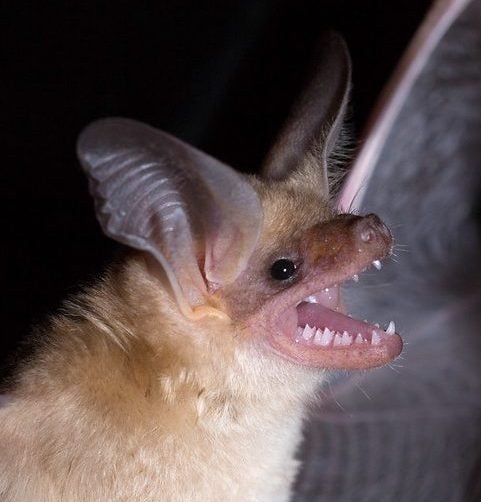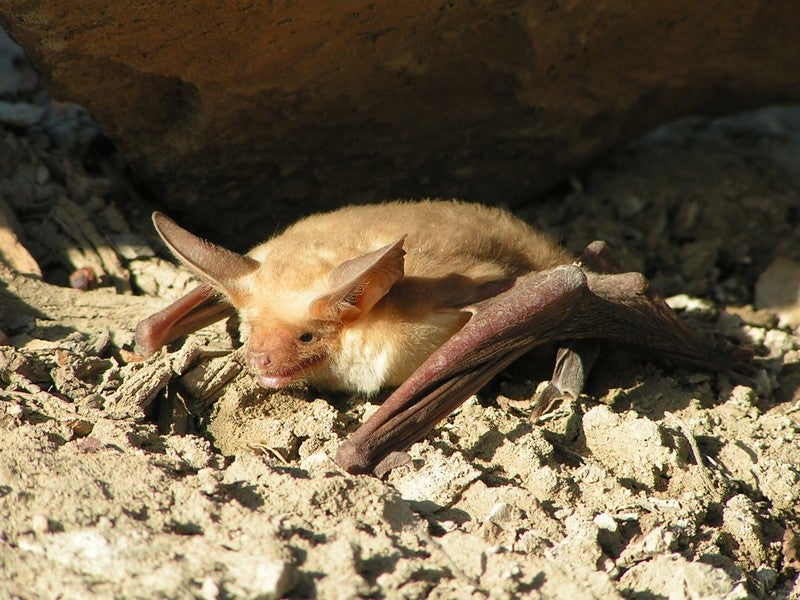
General Information: Pallid bats are nocturnal like other bats. They rest together (referred to as “roosting”) in groups of 20 or more. They can be found in low elevation areas in western North America.
Category: Focal species
Surface Water Needs: None
Federal Listing Status: None
State Listing Status: Species of Special Concern
Potential Conservation Actions:
- Minimize disturbance
- Avoid insecticide applications
Fun Fact
Pallid bats can eat up to half of their body weight in one day.
Habitat
Pallid bats use a lot of different habitats, including grasslands, shrublands, woodlands, and forests. They are most commonly found in open, arid habitats with rocky outcrops – or structures that mimic rocky outcrops, such as bridges, hollow trees, or mines – for roosting (resting).

Grasslands

Deserts

Shrublands

Woodlands and forests
Disturbance and Stressors
Human development such as urban growth and transportation development or maintenance, loss of habitat and fragmentation, and noise pollution, all contribute to the decline in pallid bats.

Noise pollution

Urban development

Road development
and maintenance

Habitat fragmentation

Sources: Arroyo-Cabrales and de Gramnont 2018, Gervais 2016, Harris 1990, H.T. Harvey & Associates 2019
Photo credits: Alan Harper, Keaton Wilson